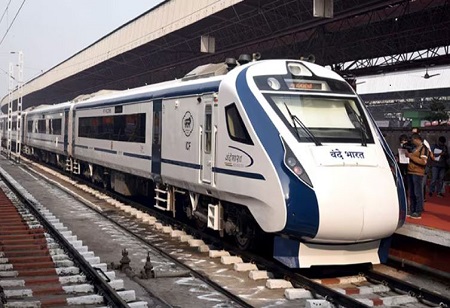
Through a recent partnership between Bharat Heavy Electricals Limited (BHEL) and Titagarh Rail Systems Limited (TRSL), Vande Bharat sleeper trains will be manufactured at TRSL’s Uttarpara, West Bengal facility. The railway deal worth Rs 24,000 crore with Indian Railways requires the development of 80 semi-high-speed sleeper train sets scheduled for completion by 2029, followed by a 35-year maintenance period.
The project kicked off on April 25, 2025, and aligns with India’s “Make in India” push to boost local manufacturing. TRSL, holding a 52% stake, will produce 50-55% of the train components, like the body and interiors, while BHEL takes care of the electrical systems, including propulsion and controls. A prototype is expected within two years, with full production starting in June 2025.
Each Vande Bharat sleeper train will have 16 coaches, 887 berths, and offer AC 1, AC 2, and AC 3 classes. Designed to hit speeds of up to 160 km/h, these trains will come with modern perks like automatic doors, vacuum toilets, and upgraded interiors, aiming to make long overnight trips more comfortable than the Rajdhani Express.
TRSL’s Vice-Chairman and Managing Director, Umesh Chowdhary, shared that the project will give a big boost to the local economy, with ₹650 crore invested to upgrade the Uttarpara factory. Plus, a joint venture called Ramkrishna Titagarh Rail Wheels Limited will start making train wheels in 2026, creating one of Asia’s largest wheel plants outside China.
Railway Minister Ashwini Vaishnaw emphasised that these trains will make 700-1,000 km journeys much more pleasant. The project hit a few bumps due to design disagreements, but those were resolved in December 2024, settling details like adding three toilets per coach and skipping the pantry car.
This BHEL-TRSL collaboration is a major milestone in India’s journey to build its own cutting-edge trains. Along with contracts awarded to BEML and Kinet Railway Solutions, Indian Railways is set to introduce 200 Vande Bharat sleeper trains, revolutionising long-distance travel by 2030.
We use cookies to ensure you get the best experience on our website. Read more...